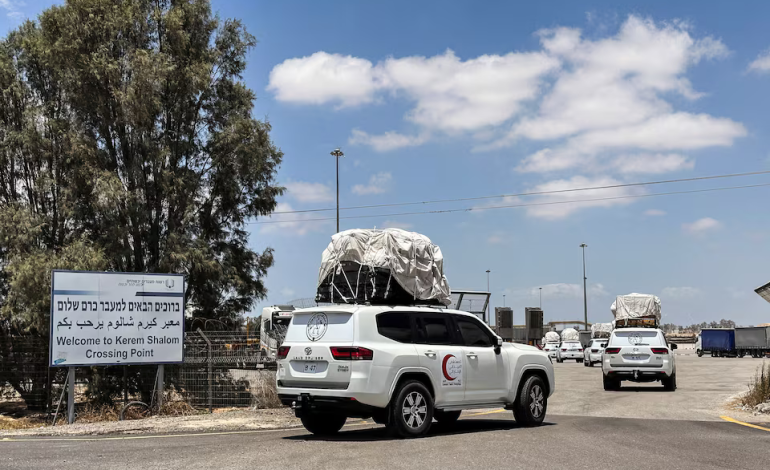Gaza Death Toll Rises Amid Aid Distribution Chaos as International Pleas for Relief Intensify

At least 43 Palestinians were reported killed in Israeli strikes across Gaza on Wednesday, including six civilians shot near an aid distribution point in Rafah.
The latest violence follows a deadly incident a day earlier where Israeli forces opened fire on a crowd gathered around a controversial aid distribution site, operated by the US-backed Gaza Humanitarian Foundation (GHF), leaving three people dead and dozens injured.
The killings underscore the deepening humanitarian crisis in the besieged enclave, where over 54,000 Palestinians have been killed since Israel launched its military campaign in response to the October 7, 2023, Hamas-led attack that left around 1,200 Israelis dead and more than 250 taken hostage.
As desperation grows, chaotic scenes have unfolded at new aid sites set up under a revamped distribution model supported by Israel and the US Witnesses described frenzied crowds and insufficient security, with UN officials confirming that 47 people were injured by gunfire during Tuesday’s aid rush.
“Distributing food in this manner is exposing people to death and injury,” said Ajith Sunghay, Head of the UN Human Rights Office in the Occupied Palestinian Territory.
The GHF said it has delivered more than 14,000 food boxes through two sites, claiming each box can sustain five people for several days. However, the UN and international aid groups have refused to participate, citing concerns that the model lacks neutrality and could politicize humanitarian aid.
Amid mounting casualties, Prime Minister Benjamin Netanyahu announced on Wednesday that Israeli forces had killed Mohammad Sinwar, a senior Hamas leader and brother of the group’s top commander, Yahya Sinwar. Hamas has not yet commented on the claim.
Meanwhile, Gaza’s health infrastructure teeters on collapse. Twenty-two of the territory’s 38 hospitals are no longer operational, with those still functioning facing catastrophic shortages of supplies. At the UN Security Council, US physician Dr. Feroze Sidhwa, who recently volunteered in Gaza, accused Israel of deliberately degrading the healthcare system. He called the crisis “entirely preventable” and warned of the “deliberate denial of conditions necessary for life.”
Calls for a ceasefire have grown louder. Hamas claims it has reached a preliminary agreement with US envoy Steve Witkoff for a ceasefire that would include a complete Israeli withdrawal from Gaza, a major flow of humanitarian aid, and a prisoner exchange. However, US and Israeli officials have rejected the terms as unacceptable.
The UN Special Coordinator for the Middle East, Sigrid Kaag, reiterated before the Security Council that humanitarian aid “cannot be negotiable” and warned against the forced displacement of civilians. Protests calling for increased aid and respect for international law have taken place in several capitals, including a demonstration by aid workers outside the German Foreign Ministry in Berlin.
On the ground, conditions remain dire. Gaza residents report looting of aid convoys and say many are afraid to approach distribution sites due to safety concerns and distrust of the screening processes intended to block Hamas affiliates. Some, like displaced teacher Tarek al-Farra, have not received any assistance for over two months.
“It was like a suicide mission,” he said of attempting to reach an aid site. “I didn’t receive any aid. Not for more than 70 days.”
With international pressure growing—from European allies including France, Germany, and Italy—on Israel to halt its offensive, and with UN agencies warning of famine-like conditions, the fate of civilians in Gaza remains precarious.
Al Jazeera and Reuters contributed to this report.







The latest news in your social feeds
Subscribe to our social media platforms to stay tuned